We hope that each of you, our readers, will enjoy and appreciate this article we present about these 5 Amazing Fungi of Asia. It was certainly our pleasure to compile the information for you. May it provide you with both education and increased awareness.
These few species listed herein represent only a portion of the natural wonders found throughout the region, though. Yet, it’s our belief that they serve as excellent representations of the wonders found here. Check out some of our other articles for similar marvels.
Rosy Veincap
Amethyst Deceiver Facts
- Leading off this article about these 5 Amazing Fungi of Asia comes the remarkable product of Nature named the Amethyst Deceiver.
- The picturesque and descriptive term given to the species serves as the generally accepted common name for a remarkable variety of mushroom. Its scientific name, however, remains the difficult to pronounce Laccaria amethystina.
- By either of these names, though, it’s a fungus with what some people humorously consider to be a psychological problem. That would be a confusing personality. That’s due to the fact that this marvel of Nature actually changes its color as it ages.
- As a result of this trait, it can sometimes be difficult to identify. This also serves as the source of the common name. The first scientific description of it occurred in 1778, as a result of the work of the respected English botanist William Hudson.
- Although it does appear in the Catalogue of Life, the IUCN currently has no listing for the Amethyst Deceiver. The fungus nonetheless faces several threats to its existence. Its greatest threat, though, likely comes in the form of climate change.
Amethyst Deceiver Physical Description
While this remarkable species understandably impresses many people, the Amethyst Deceiver does not do so due to physical size. Regardless of its many other wonderful qualities, this wonder of evolution only ranks as an average-sized form of mushroom.
Its stem, which develops as quite fibrous, as well as hollow, generally attains a maximum height of about 2.76 in (7 cm). The cap of the fungus, meanwhile, typically grows to around 2.25 in (6 cm) in diameter, and boats a small depression in the center.
Overall, the Amethyst Deceiver begins its life with a comparatively concave structure. This, however, flattens out with age. In color, the stem usually displays a lighter shade, closer to lilac. The cap, though, displays the famous purple, but it lightens as it ages.
The great majority of individual specimens also display a fascinating pattern of striations. These most commonly appear along the edges of the cap, and display an even paler shade. Its interior flesh possesses neither a discernible scent or color.
- Kingdom: Fungi
- Phylum: Basidiomycota
- Class: Agaricomycetes
- Order: Agaricales
- Family: Hydnangiaceae
- Genus: Laccaria
- Species: L. amethystina
Amethyst Deceiver Distribution, Habitat, and Ecology
Quite fortunately, the Amethyst Deceiver evolved as native to a surprisingly wide swathe of the world. In point of fact, it appears in specific regions of Asia, Europe, North America, and South America. The majority of populations appear in northern regions, though.
It also shows a remarkable versatility in terms of its habitat type. That’s due to the fact that it appears in both deciduous and coniferous forests. The species, does, though, display a pronounced preference for temperate zones within this same geographical range.
Even more amazingly, a minor mystery presently exists regarding its most common choice of habitat. For reasons that still mystify researchers, most specimens appear in the immediate vicinity of certain types of trees. These consist of both beech and oak trees.
As with all mushrooms, the Amethyst Deceiver reproduces via spores. In its case, though, these develop as relatively large in size. It remains undetermined if this fact accounts for its tendency to appear only singly or in small groupings in any one location.
Though not commonly consumed, since most consider its flesh tasteless, it nonetheless remains edible, but only technically. This confusing state exists due to a surprising fact. Most often, individual specimens actually qualify as relatively toxic in nature.
Its own genetic structure contains no known toxic compounds. However, it also remains extremely sensitive to any naturally occurring arsenic in the soil in which it appears. When this is present, the mushroom absorbs it into its flesh, rendering it toxic as well.
Indigo Milk Cap
Indigo Milk Cap Facts
- Next up in this collection of 5 Amazing Fungi of Asia comes the stunning product of evolution called the Indigo Milk Cap.
- Most frequently known by the common name we’ve used here, this brilliantly colored mushroom easily dazzles the eye. It also has several other general names, though. These alternate terms include the blue milk mushroom and indigo lactarius.
- Scientific professionals, however, typically refer to the fungus by its official scientific name. That’s the relatively simple term, as such things go, of the Lactarius indigo. Regardless of which term one chooses to employ, though, it’s a marvel of evolution.
- The remarkable species received its present name at the hands of the respected German-American mycologist, Lewis David de Schweinitz. This noted researcher assigned it the term it’s now known by as a result of reclassification. This he did in 1838.
- The first known recognition of it as a separate and distinct species, however, took place in the year 1822. The same renowned researcher that later changed the name due to reclassification also made the first formal acknowledgement of the incredible fungus.
- The intriguing Indigo Milk Cap appears to be maintaining a population base that’s both sizeable and stable. This further seems to hold true throughout the entirety of its natural range. The IUCN therefore has no listing for it on the organization’s Red List.
- Nevertheless, that status could change in the near future. That’s because, like most species, it now faces several threats to its continued existence. Habitat loss naturally poses a danger. It’s greatest threat, though, likely consists of the peril of climate change.
Indigo Milk Cap Physical Description
The visually distinctive Indigo Milk Cap quickly draws the attention of all those who encounter it. It does so for several reasons, though, not just because of its remarkable coloring. This marvelous fungus is truly an impressive creation of Nature and evolution.
For starters, the brightly shaded mushroom varies in size, frequently significantly, like most of its kind. That’s due to a wide a variety of reasons, including local environmental factors. Most specimens, however, attain a cap diameter of between 2 – 6 in (5 – 15 cm).
The stem of this marvel of the world of mycology, meanwhile, ranges from 0.8 – 3 in (2 – 8 cm) in height. The thickness of this portion of the species further varies. This measurement itself ranges from 0.4 – 1. in (1 – 2.5 cm). This usually provides it with a stable base.
The edges of the cap also roll under as the fungus matures. It shares this trait with other members of its genus. The mushroom also shares the characteristic that serves as part of its name. That’s because, if the flesh is damaged, a milk-like substances slowly oozes out.
Yet it’s the coloring of the Indigo Milk Cap tht garners the most attention. That’s due to the fact that this presents as a brilliant shade of indigo blue. Even the aforementioned milky substance within it shows the same shade! This slowly changes to green in air, however.
- Kingdom: Fungi
- Phylum: Basidiomycota
- Class: Agaricomycetes
- Order: Russulales
- Family: Russulaceae
- Genus: Lactarius
- Species: L. indigo
Indigo Milk Cap Distribution, Habitat, and Ecology
Fortunately, both for the Indigo Milk Cap itself, as well as those of us who appreciate Nature, the mushroom has an extremely large range of habitation. That’s because it inhabits certain portions of the continents of North America, Central America, Asia, and Europe.
In Europe, it’s only known to appear in southern France. In Asia, though, it lives in both China and India. Meanwhile, in Central America, the fungus is known to inhabit Costa Rica, Guatemala, and Colombia. Elsewhere, it thrives in the southern and eastern United States.
There, the majority of specimens of this impressive fungus develop from along the Gulf Coast of the United States, to the Appalachian Mountains. There, however, its population concentrations become somewhat scarce. Small groupings do appear elsewhere, though.
All regions in which it makes its home, though, share various natural attributes, of course. Chief among these is the presence of sufficient moisture. Warm temperatures represent another factor. Common locations include damp forests, frequently of pine or oak.
Much like many of its relatives, the intriguing Indigo Milk Cap evolved a mutualistic relationship with certain species of plants. These include pine and oak, thus explaining its preference for forests containing a high ratio of such species. It mainly thrives on the roots.
There, the mushroom extracts fixed carbon from its host tree. In exchange, however, the tree itself benefits. That’s due to the quantities of various amino acids and minerals the fungus removes from the surrounding soil. These it feeds to the host, ensuring mutual survival.
Amethyst Deceiver
Amethyst Deceiver Facts
- Our next choice for inclusion in this gathering of these 5 Amazing Fungi of Asia is the remarkable marvel of Nature known as the Amethyst Deceiver.
- The picturesque and descriptive term used for the wonder serves as the generally accepted common name for a remarkable variety of mushroom. Its scientific name, however, remains the difficult to pronounce Laccaria amethystina.
- By either of these names, though, it’s a fungus with what some people humorously consider to be a psychological problem. That would be a confusing personality. That’s due to the fact that this marvel of Nature actually changes its color as it ages.
- As a result of this trait, it can sometimes be difficult to identify. This also serves as the source of the common name. The first scientific description of it occurred in 1778, as a result of the work of the respected English botanist William Hudson.
- Although it does appear in the Catalogue of Life, the IUCN currently has no listing for the Amethyst Deceiver. The fungus nonetheless faces several threats to its existence. Its greatest threat, though, likely comes in the form of climate change.
Amethyst Deceiver Physical Description
While this remarkable species understandably impresses many people, the Amethyst Deceiver does not do so due to physical size. Regardless of its many other wonderful qualities, this wonder of evolution only ranks as an average-sized form of mushroom.
Its stem, which develops as quite fibrous, as well as hollow, generally attains a maximum height of about 2.76 in (7 cm). The cap of the fungus, meanwhile, typically grows to around 2.25 in (6 cm) in diameter, and boats a small depression in the center.
Overall, the Amethyst Deceiver begins its life with a comparatively concave structure. This, however, flattens out with age. In color, the stem usually displays a lighter shade, closer to lilac. The cap, though, displays the famous purple, but it lightens as it ages.
The great majority of individual specimens also display a fascinating pattern of striations. These most commonly appear along the edges of the cap, and display an even paler shade. Its interior flesh possesses neither a discernible scent or color.
- Kingdom: Fungi
- Phylum: Basidiomycota
- Class: Agaricomycetes
- Order: Agaricales
- Family: Hydnangiaceae
- Genus: Laccaria
- Species: L. amethystina
Amethyst Deceiver Distribution, Habitat, and Ecology
Quite fortunately, the Amethyst Deceiver evolved as native to a surprisingly wide swathe of the world. In point of fact, it appears in specific regions of Asia, Europe, North America, and South America. The majority of populations appear in northern regions, though.
It also shows a remarkable versatility in terms of its habitat type. That’s due to the fact that it appears in both deciduous and coniferous forests. The species, does, though, display a pronounced preference for temperate zones within this same geographical range.
Even more amazingly, a minor mystery presently exists regarding its most common choice of habitat. For reasons that still mystify researchers, most specimens appear in the immediate vicinity of certain types of trees. These consist of both beech and oak trees.
As with all mushrooms, the Amethyst Deceiver reproduces via spores. In its case, though, these develop as relatively large in size. It remains undetermined if this fact accounts for its tendency to appear only singly or in small groupings in any one location.
Though not commonly consumed, since most consider its flesh tasteless, it nonetheless remains edible, but only technically. This confusing state exists due to a surprising fact. Most often, individual specimens actually qualify as relatively toxic in nature.
Its own genetic structure contains no known toxic compounds. However, it also remains extremely sensitive to any naturally occurring arsenic in the soil in which it appears. When this is present, the mushroom absorbs it into its flesh, rendering it toxic as well.
Mycena Chlorophos
Mycena Chlorophos Facts
- Now appearing in this listing of 5 Amazing Fungi of Asia we present the mind-boggling one that goes by the name of Mycena Chlorophos.
- This truly extraordinary variety of fungus remains known to researchers by its relatively unassuming scientific name given here. Unfortunately for the layperson, for the moment, the remarkable species has no generally accepted common name.
- Only the name of the awesome fungus fails to impress those who encounter it or learn of it, however. This fascinating fungus actually represents one of the handful of known related species that actually displays a natural luminescence.
- The first recorded scientific description of the Mycena Chlorophos occurred in the year 1860. This occurred as a result of the combined efforts of the English researcher Miles Berkeley, and the American botanist, Moses Ashley Curtis.
- Quite unfortunately, scientists still do not know a significant amount about this incredible work of Nature. This regrettable lack of knowledge occurs due to a combination of it short duration and highly limited territorial range.
- Currently, the IUCN has no listing for it on its Red List of Threatened Species. The marvel does, however, face several serious threats to its existence. Although habitat loss remains a danger, its greatest peril most likely stems from climate change.
Mycena Chlorophos Physical Description
Regardless of its other claim to fame, the Mycena Chlorophos represents a comparatively small variety of mushroom. Thankfully, though, Nature often demonstrates that physical size has absolutely no bearing on the impressiveness of its many distinctive creations.
The height of its comparatively thin stalk actually varies quite significantly, measuring from 0.2 – 1.2 in (6 – 30 mm). Its cap, meanwhile, also ranges in size over a broad range. But, this portion of it typically does not exceed roughly 1.2 in (30 mm) in total diameter.
The same cap also possesses a thin coating of a harmless, though surprisingly sticky, substance. The most notable feature of the Mycena Chlorophos, however, obviously remains its naturally occurring luminescence. This presents as a pale green.
It also holds one more fascinating, if somewhat unpleasant, characteristic. This unique wonder of evolution emits a comparatively strong odor of ammonia. Due to the presence of this particular scent, the relative edibility of this fungi remains in question
- Kingdom: Fungi
- Phylum: Basidiomycota
- Class: Agaricomycetes
- Order: Agaricales
- Family: Mycenaceae
- Genus: Mycena
- Species: M. chlorophos
Mycena Chlorophos Distribution, Habitat, and Ecology
The Mycena Chlorophos grows endemically only in a very limited area of the world. This consists of certain portions of subtropical Asia. More precisely, these sections include the countries of Taiwan, Polynesia, Japan, Sri Lanka, and the island of Java, in Indonesia.
To the amazement of some, this mushroom also grows in completely different parts of the globe. In fact, these alternate zones include small portions of Brazil and Australia. However, experts believe that humans accidentally transported it to those locations.
Most fortunately for it, the Mycena Chlorophos has another trait working in its favor. Within these widely different ranges, the species appears to have evolved as highly adaptable. As a result of this evolutionary advantage, it may be found in a variety of forest habitats.
Wherever it appears, though, it nonetheless displays a decided preference for a specific environment. That’s due to the fact that it appears almost exclusively among areas of woody debris. This most commonly includes pieces of fallen bark, branches, and twigs.
The trademark bioluminescence for which it remains best known, however, doesn’t last very long. In point of fact, it’s most pronounced when the mushroom first develops. Afterward, the eerie glow slowly fades over a period that typically measures roughly 72 hours.
Phallus Indusiatus
Phallus Indusiatus Facts
- Finishing up this compendium of 5 Amazing Fungi of Asia is one whose properties are shaking up the scientific world in some respects, the surprising Phallus Indusiatus.
- The attention-grabbing term applied to the marvel serves as the scientific name for a fascinating variety of mushroom. This remarkable, and in some ways quite controversial, fungus, also goes by several other names, however.
- These include such terms as the bamboo pith, bamboo mushroom, veiled lady, crinoline stinkhorn, and the long net stinkhorn. Regardless of which of these distinctive names one uses for it, though, the fungus represents a most unusual species.
- That holds true due to the amazing existence of an entirely coincidental natural attribute it developed in the course of its natural evolution. When exposed to its inherent aroma, some women experience spontaneous orgasms!
- The first recorded scientific recognition of the Phallus Indusiatus as a separate species took place more than two centuries ago. Occurring in 1798, this took place as the result of the efforts of the French botanist Etienne Pierre Ventenat.
- For the moment, the IUCN has no listing for this species on its Red List of Threatened Species. It nonetheless faces potential threats to its continued existence. Like many other species around the world, it’s vulnerable to climate change.
Phallus Indusiatus Physical Description
The Phallus Indusiatus remains well known for more than just its distinctive aroma. It’s also an impressive specimen in terms of sheer physical size. In point of fact, this work of Nature possesses some highly respectable physical dimensions.
Mature examples of this intriguing variety frequently attain a height measuring as much as 10 in (25 cm). The large bell-shaped cap itself also boasts a respectable size. This part of the unique marvel reaches an average width of approximately 1.6 in (4 cm).
Yet the cap has other qualities to fascinate one than simply mere size. This feature further produces copious quantities of a green slime, containing its spores. This viscous fluid tends to attract large numbers of insects, including flies, who then spread the spores.
The Phallus Indusiatus also produces yet another distinctive feature. That’s a comparatively wide, and somewhat lacy, skirt. In color, meanwhile, the stalk generally displays a bright white color. The cap, though, most often shows either a light or dark brown shade.
- Kingdom: Fungi
- Phylum: Basidiomycota
- Class: Agaricomycetes
- Order: Phallales
- Family: Phallaceae
- Genus: Phallus
- Species: P. indusiatus
Phallus Indusiatus Distribution, Habitat, and Ecology
Quite fortunately, the Phallus Indusiatus inhabits a wide swathe of the globe. Its greatest concentrations appear in parts of the continents of Africa and South America. But this natural wonder also grows, if in smaller numbers, in Mexico and portions of Asia.
Sadly, though, its overall numbers remain relatively low. That’s because, while it appears in many regions, its density in each of them is thin. It primarily appears in regions of tropical forest, but will grow opportunistically in gardens if the soil is rich enough for it.
It’s also edible, and commonly appears in Oriental cuisine. Regrettably, it doesn’t last long, typically only appearing for about 3 days. Research further shows that this fungus also possesses numerous chemical compounds with valuable medicinal properties.
But the compound of greatest interest to most remains the one that creates its astounding effect on women. The sexually stimulating effect for which it’s best known remains inconsistent, however. In studies, only 37.5% of females experienced the amazing result.
In lab tests, the Phallus Indusiatus also required strong concentrations. With smaller dosages, though it failed to create the controversial effect, it caused elevated heart rates. Men, meanwhile, found the aroma unpleasant, and experienced no physiological effects.
5 Amazing Fungi of Asia
We hope that each of you enjoyed reading, and hopefully learning from, this article we’ve presented to you about these 5 Amazing Fungi of Asia. It’s also our hope that doing so has left you with either a new or renewed appreciation for such wonders of Nature.
Unfortunately, however, many of their kindred around the world now find themselves facing strong threats to their continued existence as a species. Many of those dangers, in fact, stem from the actions of mankind. We must do all we can to protect and preserve them all.
Check out our other articles on 5 Fabulous Mammals of Florida, Spectacular Halloween-Appropriate Species, 5 Special Species of Sumatra, Earth’s Countless Amazing Amphibians
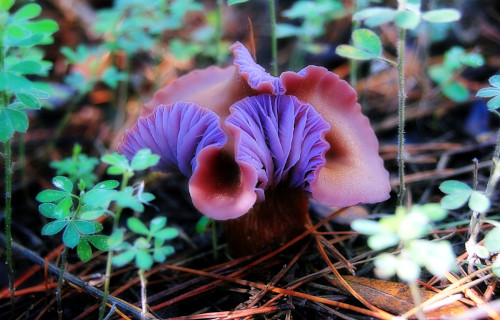
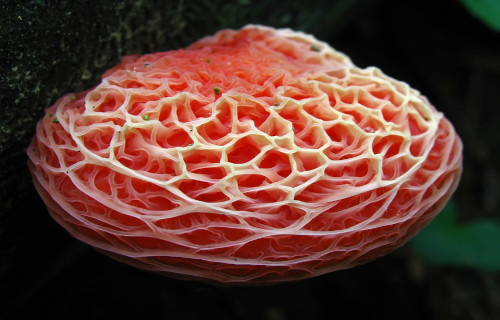
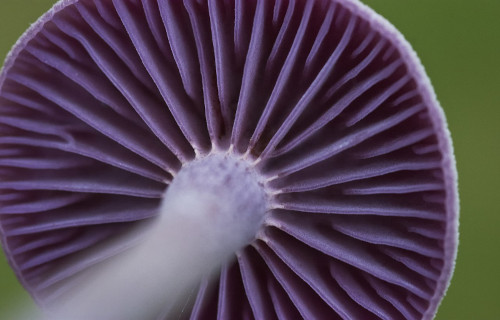
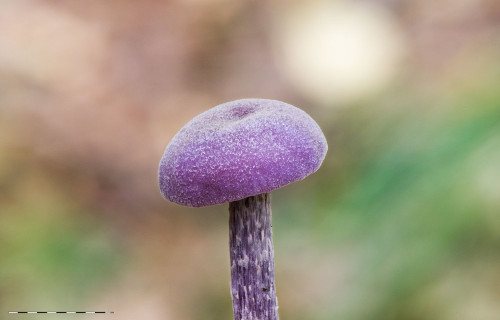
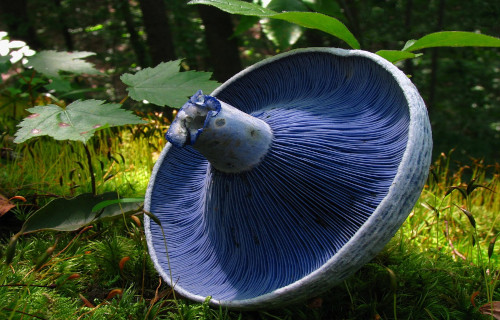
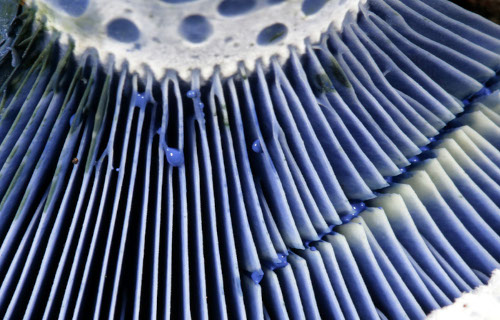
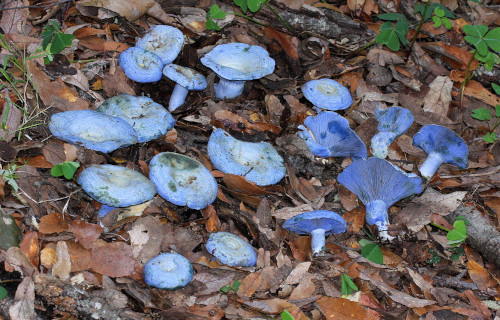
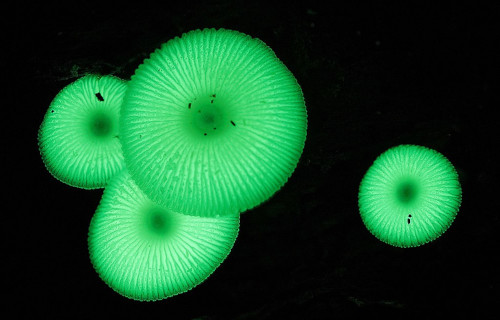
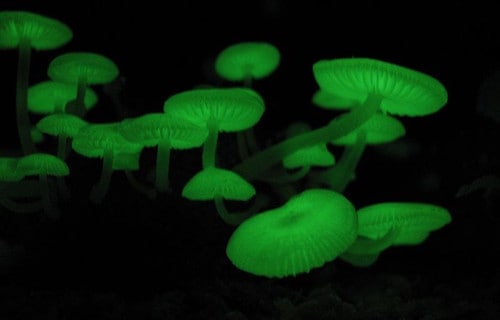
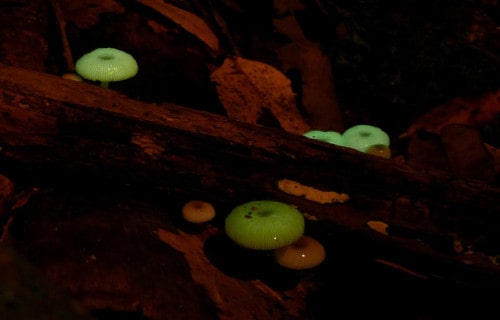
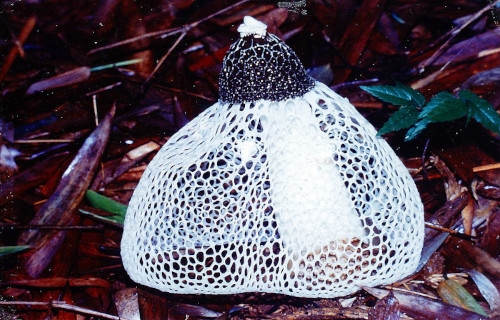
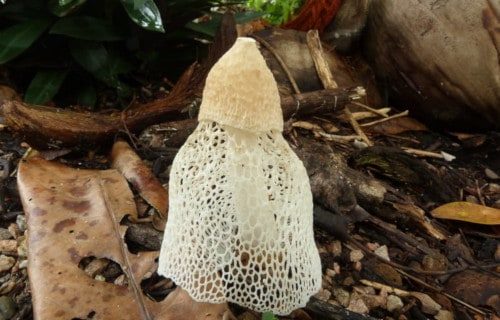
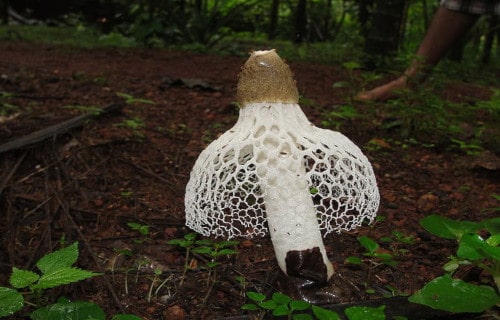









Leave a Reply